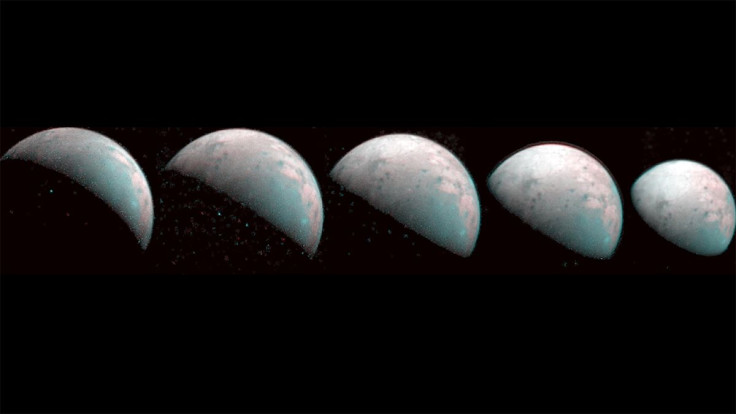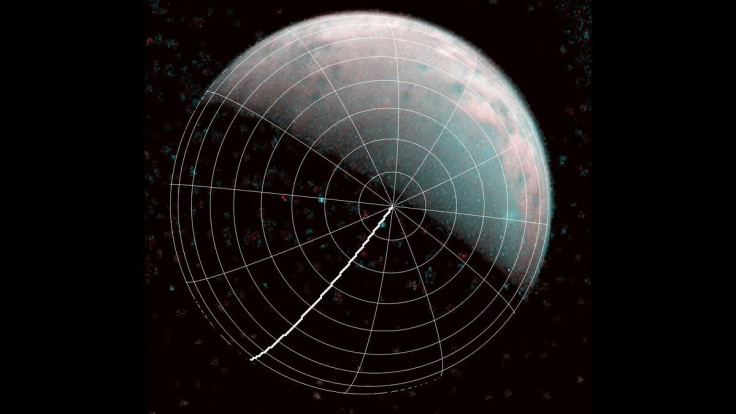Jupiter's Largest Moon: NASA's Juno Snaps First Images Of Ganymede's North Pole
KEY POINTS
- Last December, NASA's Juno spacecraft came close to Jupiter's moon Ganymede
- It snapped hundreds of photos of the moon, including images of its north pole
- The Juno images provide the first infrared mapping of the Jovian moon's north pole
NASA's Juno spacecraft took the first images of Ganymede's icy north pole, providing the first infrared mapping of the region.
On Dec. 26, 2019, the Juno spacecraft flew close to Jupiter's moon, Ganymede, and took images of its surface using the Jovian Infrared Auroral Mapper (JIRAM) instrument. During its closest approach, when it was just 62,000 miles away, JIRAM snapped 300 infrared images. This is the first infrared mapping of Ganymede's northern frontier.

In an annotated image, the north pole is at the very center of the image, while the thick white line marks the 0-degrees longitude.

The images not only provided the first view of the moon's north pole, but also revealed details about the ice in the region.
The data showed the ice in both poles of Ganymede is amorphous, which means it has no clearly defined shape or structure, because it is constantly exposed to the plasma that follows the moon's magnetic lines to the poles. There, the plasma "wreaks havoc" on the ice, preventing them for having a structure.
In fact, the ice at the poles have different infrared signatures from the ice at the equator.
"The JIRAM data show the ice at and surrounding Ganymede's north pole has been modified by the precipitation of plasma," Juno co-investigator Alessandro Mura of the National Institute for Astrophysics in Rome said in a news release from NASA Jet Propulsion Laboratory (JPL). "It is a phenomenon that we have been able to learn about for the first time with Juno because we are able to see the north pole in its entirety."
Ganymede is the largest moon in our solar system, and the only one that is larger than the planet Mercury. Discovered by Galileo Galilei on Jan. 7, 1610, Ganymede, as well as three other Jovian moons, are known as the Galilean satellites, the largest of Jupiter's moons and the first ones found to orbit a planet other than the Earth.
According to NASA, it was the discovery of these four moons that eventually led to the understanding the solar system was orbiting around the Sun, not the Earth.
Today, scientists believe Jupiter has a total of 79 moons, 53 of which are named while the others are not. Long after Ganymede was discovered, valuable data such as the Juno spacecraft images showed that there was still so much to learn about the Jovian moons.
© Copyright IBTimes 2024. All rights reserved.






















